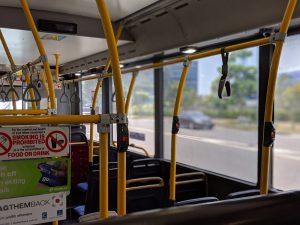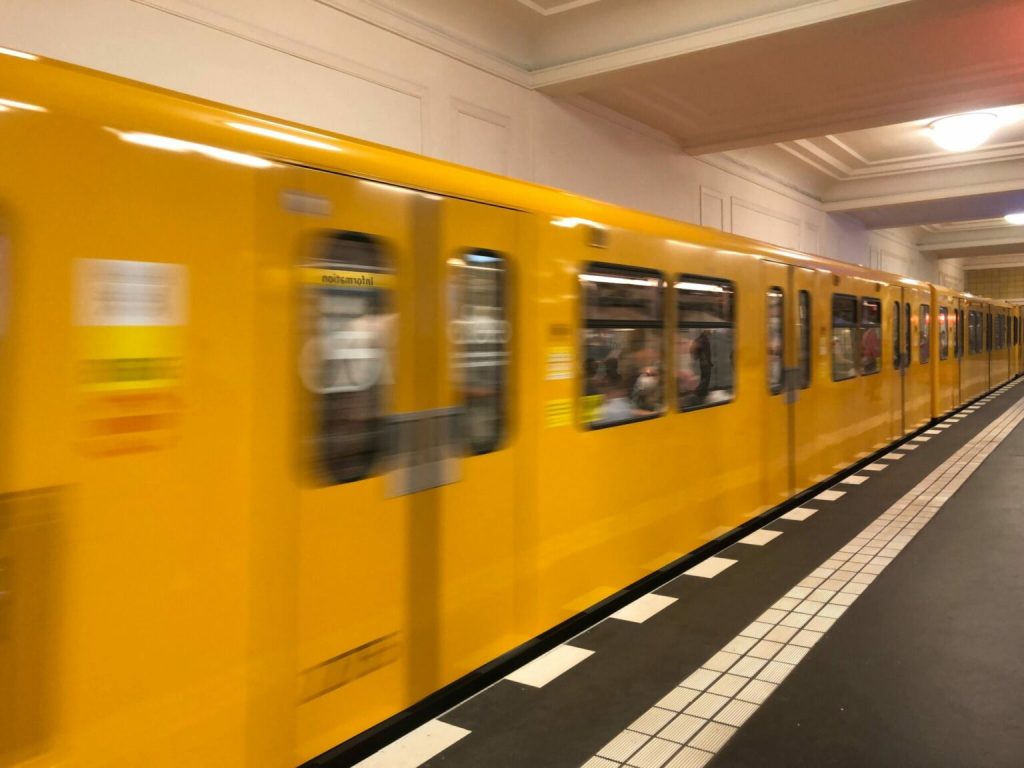Public transport is an essential part of people’s everyday lives. Trains and subways get us where we need and want to go, buses provide critical rail gaps and whisk us away, and trams provide the ground-level transport we require, usually without diving underground or lifting into the sky.
Billions of people worldwide make regular use of public transport, with many using it as their primary mode of transportation. However, whilst many people use public transport, there are many more who do not. Here is why more people should be using public transport.
Why is Public Transport Important?
Public transport is a vital part of the overall transport network. Whilst walking and cycling play an instrumental role in getting people where they are going, public transport can help fill the gaps when distances are too far to travel by foot or by bike.
You will notice that I did not include the personal automobile in this list; also known as car, SUV, truck, etc.
Personal automobiles are not efficient modes of transport for the average person, consuming far more energy and resources than necessary.
Public transport has some of the lowest ecological footprints other than walking or cycling. Because of the lower energy use, public transport is critical to reducing our world’s dependence on oil, gas, and other fossil fuels.
Advantages and Disadvantages of Public Transport
First, we will discuss the advantages of public transport. Benefits of public transport include the following:

It’s Affordable
Not only is public transport infrastructure cheaper than car infrastructure to build but it is also less costly to maintain. Streets, roads, and motorways are expensive to build, and they have to be regularly maintained in order to be operable, which can be quite costly. Public transport also has to be maintained, but the costs to do so are usually significantly less than road and car infrastructures.
Hello, Love
Many people have met their significant others on public transport. This would not be possible if you took a car! Who knows? You just could be missing out on meeting the love of your life by choosing to take the car. If not a partner, you can also make new friends along the way.
Let’s Get Moving
It takes a small fraction of space to move people in one bus than it does to transport them in dozens of cars. Not only does this require fewer resources to transport a greater amount of people, but it also allows more space to be available for people to use, rather than said space being reserved for the personal automobile. Projects such as “Open Streets” and car-free days have increasingly become popular in cities around the globe, and many of these streets have remained car-free for longer or even permanently in some cases. Projects such as these reduce the burden on the climate enormously, as they reduce air pollution and carbon emissions. Public transport needs to be an integral part of these projects, as its implementation and system integration can help people understand why ditching the car and opting to go by public transport is better for them and the planet.
Social Butterfly
Public transport is a social activity, as you are often interacting with many other people. Increased daily social interaction is proven to improve mental and physical health, as well as to lengthen lifespan. Many public transport hubs have also evolved into social hubs, with shops, restaurants, and many other businesses popping up either in stations or around them. This is a great thing because it encourages people to shop where they live, and ironically, can reduce the amount that some people need to travel. Think about it: why do you need to travel around the city to buy what you need when everything you are looking for is within walking distance?
Happy Travel, Happy Life
Traveling by public transport is scientifically proven to make people happier. The stress of being behind the wheel, dealing with traffic, and paying an incredibly high price for gas certainly does not produce this result.

Is Public Transport Cheaper Than Driving?
The answer is a definite “yes”. Public transport is more affordable than driving. When you consider maintenance costs, parking costs and tickets, the car purchase cost or lease, car insurance costs, and petrol/fuel costs, it is no wonder. With gas and petrol prices particularly high at the moment, there has never been a better time to switch to public transport. Some cities and countries are even reducing public transport costs locally or nationally to reduce the sting of global inflation and convince more people to make the switch. Programs and schemes such as these are paramount to fighting the climate crisis we are facing.
But what about the disadvantages?
Sometimes Slower Than Other Options
Although public transport is usually the fastest option in countries around Europe and Asia, it is a different story in North America. In North American countries, public transport can often be the slowest possible option other than walking; slower than biking, and much slower than a car. Whilst this is an unfortunate reality of today, it does not need to be the reality of the future. The United States recently passed a huge infrastructure law that includes funding for maintenance and expansion of passenger rail, which could greatly reduce delays and travel times for passenger trains in the country. Similarly, Canada is currently in the process of upgrading its passenger rail infrastructure between Toronto and Montreal. It has dedicated tracks being built, separating passenger trains from freight trains, thereby reducing delays as well as increasing the frequency of passenger trains and the reliability of freight trains.
Disease Risk
While we often promote the benefits of using public transportation, especially during flu season, it’s essential to acknowledge that close contact with others can increase the risk of catching illnesses. During the COVID-19 pandemic, we managed to get some ways forward on how to deal best with circumstances of virus diseases. Many travelers have found masks to be a useful tool in reducing this risk and protecting both themselves and others. Wearing a mask when you’re feeling unwell or using public transport, whether it’s a plane or local bus, is a responsible choice. What’s more, disinfecting or washing your hands, once you get off public transport is a quick action, to stay healthy during winter. So, consider adding a mask and hand disinfectant to your travel essentials to help safeguard your health and that of those around you.

Safety Concerns
We cannot talk about the advantages and disadvantages of public transport without talking about safety. The reality is that some people do not feel safe on public transport in certain cities and areas. Whilst there are many factors involved in this, it is simply not acceptable that anyone should feel anything but safe and comfortable when they are riding on public transport. Cities, local and federal authorities should make it their absolute priority to see to it that people feel safe, wherever they are, whenever they are there.
Unreliable
How can you trust that you are going to get where you need to go if you cannot rely on the system you are using to get there? In some instances, local and regional transport systems can be unreliable; they do not show up when they are supposed to, and their vehicles break down too often and come far too infrequently. The biggest reasons for this are lack of regular maintenance and lack of steady, long-term investment, particularly in North American countries. When a society invests in its public transport infrastructure, it is choosing to invest in its people and future as a resilient and people-centric place. More cities, towns, regions, and countries should invest more in their public transport systems. This is possible when we vote for political leaders who support building better public transport infrastructure.
Summary
Overall, we believe that the advantages of building and using public transport in our cities, regions, and countries far outweigh the disadvantages as we have outlined above. We hope that the next time you have the choice, you will be able to travel by public transport and enjoy the benefits that come with it.











